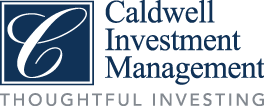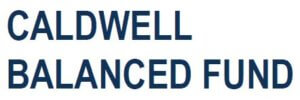Macro Commentary
Markets continued to grind higher in Q3. Canada’s market was relatively stable throughout the quarter, while U.S. markets saw intra-quarter volatility driven by trade and other political uncertainty. Looking back at Q2 earnings season (which reported during Q3), it was the second straight quarter of year-over-year declines in earnings for the S&P 500. Tariffs remained the main question on earnings calls and continue to create uncertainty for businesses, especially in the Industrials and Consumer Discretionary sectors. Trade impact can be seen within the Transportation industry, with declines in cargo volumes and pressure on trucking spot rates.
However, this weakness has so far been isolated to only certain parts of the economy. For example, Paychex, a leading provider of payroll and HR services to small-mid companies in the U.S., reported in early October that their business sentiment surveys are more positive today than they were 6-9 months ago, that wages are increasing as companies struggle to hire enough people to meet demand, and that they’re seeing no signs of economic weakness through payroll activity. With Q3 earnings having started reporting more recently, airlines have reported strong travel demand – including leisure travel – and bank earnings have been solid, with strong credit performance.
It seems that a Goldilocks scenario, where the economy is neither too hot or too cold, can continue to support markets given ultra-accommodative interest rate policies. But be aware that these are bizarre times. There is over $16 trillion of debt globally that is trading at negative yields. It really is hard to fathom: just imagine taking a time machine back to the early 1980s, when U.S. 30-year mortgage rates were in the high teens, and telling someone that, in the not-too-distant future, lenders will actually be paying borrowers to take out a loan [a Danish bank was the first to offer negative interest rate mortgages this summer – the bank is paying borrowers 0.5% annually on their loans].
Portfolio Commentary
Taking it down to the portfolio level, our core investment principles have not changed: protect and grow our investors’ capital through discounted valuations, strong balance sheets, high quality management teams and attractive business environments. Top performers in Q3 were Keysight Technologies (“KEYS” +8.3%), Ansys (“ANSS” +8.1%), and S&P Global (“SPGI” +7.5%). KEYS had a strong earnings report driven largely by continued strength in 5G deployments. The strong results suggest that the impact from the Huawei ban was less than feared. Ansys responded favorably to a ‘beat and raise’ quarter and greater detail on their large and growing addressable market, which will provide the company with significant growth runway for years to come. SPGI also had a strong earnings result, with operating margins expanding 220 basis points despite a relatively soft debt issuance environment.
Offsetting these were declines in Berry Global (“BERY” -25.0%), Shawcor (“SCL” -16.7%) and Middleby (“MIDD” -13.9%). We have recently added to our positions in BERY and MIDD as headwinds seem temporary and valuations look compelling, while Shawcor continues to trade meaningfully below its all-time highs despite pointing to a record level of bid+budget+backlog (a leading indicator of future revenue).
Two stocks were added to the portfolio in Q3: Anthem (“ANTM-us”) and Johnson & Johnson (“JNJ-us”). Both companies are in the U.S. Health Care sector.
Anthem is one of the largest health benefit companies in terms of medical membership, serving 40 million medical members in 50 states. As one of the largest health insurers in the U.S., Anthem has a strong competitive moat driven by scale, regulation, and complexity. An aging demographic provides a secular tailwind to the industry and despite political rhetoric, the health insurers will likely continue benefiting from the move towards value-based care as they are in a position to improve outcomes while driving costs lower. Anthem also has strong company-specific growth drivers, including in-sourcing their pharmacy benefit manager and increasing market share in government insurance, where they are under-penetrated.
Johnson & Johnson is a health care juggernaut with 135,000 employees conducting business in virtually all countries of the world. It operates in 3 segments – Pharmaceutical, Medical Device, and Consumer Products – and has 26 products/platforms generating over $1 billion in sales. Its brands include Johnson’s, Tylenol, Aveeno, Band-Aid, Listerine, Neutrogena, Benadryl, Zertec and Pepcid. While the company is a poster-child for consistent performance (35 consecutive years of adjusted operating earnings growth and 57 consecutive years of dividend increases), recent operational challenges and litigation uncertainty have created a compelling entry point, in our view. Operational performance has already started to improve, driven by a multi-year pipeline of innovation, and we expect the litigation overhang, which appears to be overly punitive, to dissipate over time.
Looking forward
What does safety mean to you? This is an interesting question today. The market is currently operating under a framework of ‘haves’ and ‘have nots.’ The ‘haves’ come in two camps: companies whose businesses are resilient to economic recessions (who wouldn’t want that safety in the face of today’s economic uncertainty?), and those who appear to have significant growth runway (which provides safety via the ability to outgrow a recession). In each case, however, the perceived safety is focused solely on earnings, but earnings are only one input into a stock’s price. The other input is the valuation multiple, and when we look at the ‘haves’ from that perspective, they don’t actually look very safe at all. In fact, investors’ rush to safety has pushed their valuation multiples to record highs and, in many cases, substantially above historical levels so that one might consider them to be rather dangerous.
The ‘have nots’, on the other hand, are companies whose businesses are quite sensitive to economic conditions (so that earnings will fall significantly in a recession) or where the earnings growth outlook appears underwhelming. In the name of fleeing danger, investors have sold the ‘have nots’ to the point where their valuation multiples are near record lows. From that perspective, they don’t look so dangerous after all.
The problem with this dynamic has been timing. The expensive ‘haves’ have continued to get more expensive while the cheap ‘have nots’ have continued to get even cheaper. We expect that, at some point, this dynamic will flip. As a Bernstein analyst put it: “Could this finally be the quarter where the lofty expectations for defensives versus the low bar set for cyclicals leads to a rotation?” We are slightly tilted today towards the ‘have nots’ and are well positioned should that rotation occur.
All data is as of September 30, 2019 unless otherwise indicated. The information contained herein provides general information about the Fund at a point in time. Investors are strongly encouraged to consult with a financial advisor and review the Simplified Prospectus and Fund Facts documents carefully prior to making investment decisions about the Fund. Commissions, trailing commissions, management fees and expenses all may be associated with mutual fund investments. Rates of returns, unless otherwise indicated, are the historical annual compounded returns including changes in unit value and reinvestment of all distributions and do not take into account sales, redemption, distribution or optional charges or income taxes payable by any unitholder that would have reduced returns. Mutual funds are not guaranteed; their values change frequently and past performance may not be repeated. Publication date: October 22, 2019.
12303168464egw4gwe4g

